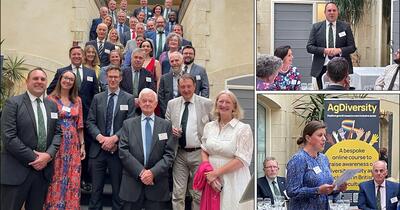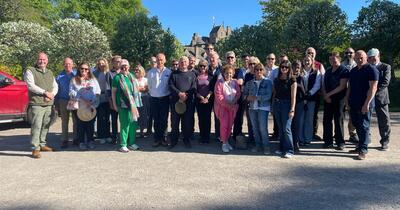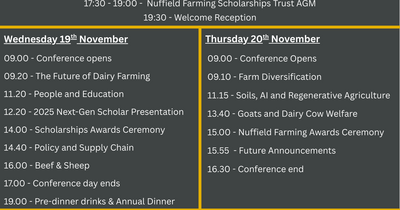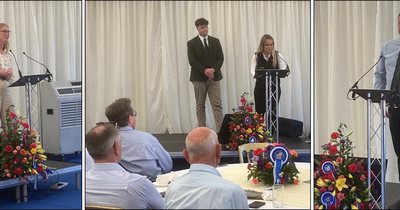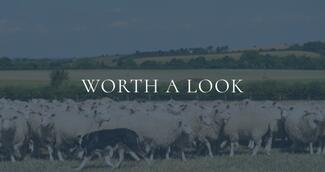
At the end of June Tim May organised a fascinating study tour to Sweden. The country was already in the grips of a very serious drought, with spring crops struggling across the entire region. The group flew into Gothenburg and travelled north east to meet with first generation farmers Maria and Tomas Torsein. Tomas had left his employment to purchase his own farm on pretty marginal land but at a decent price. He was aiming to manage it following Holistic management principals. With a close working relationship with the research department of the Swedish university of agricultural science. Tomas looked to be well set up to deal with the drought with a stocking rate that would match the grass growth available.
A visited to one of the largest milking herds in the country with 1200 cows which the week before had lost their organic contract due to an excess of organic milk in Europe. The farm included an AD plant feed by a 2-mile-long slurry pipe from the dairy unit with the digestate feeding the arable and silage ground. The cows were housed for most of the year, Swedish law requires that cows must go outside for a minimum period of the year, they aimed to align this time with the dry period. The firm had embraced controlled traffic farming across all the operations, with silage wagons towed behind the two foragers to keep everything on the same wheel path.
Like Dairy farms in the UK finding home grown staff were in shortage with Swedish staff involved in machinery operations and management.
Our second visit of the day was to Thomas Burglund an organic cheese maker and the oldest registered cheese brand in Sweden first registered in 1889. Cheese had been made on and off at Almas since the 1830’s. Thomas returned to the business in 2008 and restarted making cheese, last made in 1961. Thomas managed to find the old cheese maker to teach him the recipe. Thomas’s goal was to become an international high end cheese (a big cheese) and feels that there is still 15 years of work to be done at the world cheese fairs to get to that level.
He is already exporting his cheese around the world, and has found that he needs to match the maturity / flavour to suit different countries. He felt that he had to have the cheese on the farm to keep the dairy viable and that he wanted to keep the dairy going to keep the arable crops viable. The dry season was showing the benefits of growing heritage crops like spelt which were more vigorous than the modern varieties. Thomas also had an interest in forestry on his estate which was much more lucrative than farming.
The next day we visited the Swedish university of agricultural sciences Alnarp. The facility was looking at regenerative agriculture, and we discussed knowledge transfer before going to look at perennial wheat, agro forestry and companion cropping trials. The trails plots were suffering from the drought, highlighting the importance of having government backed research as when disasters happen the research team still gets paid.
In the afternoon we visited Joel Masson an organic arable and vegetable producer. Joel was the only vegetable producer in the area. When we asked why his neighbours weren’t growing veg too he didn’t really know, and hasn’t been able to work it out. With a can do attitude, Joel was not content to let things be, constantly learning from new crops. An amazing crop of organic potatoes grown under irrigation reminded us of the importance of combining solar energy and water.
The following boiling hot day we attended the Swedish version of Cereals, and we were happy to find stands dishing out free hats and seat pads, which was a first for us, I guess Swedish seats are a bit hard. The show combined arable and livestock, as well as organic and conventional systems. This provided a much greater level of integration with crop and grass trials side by side. The show has featured very popular soil pits for many years, each year with a different theme. This year looking at the effect of applying lime at different times of the year, and the impact of sowing density on Barley.
On our final day we went to visit the oat milk processor Oatly. The company started on the back of a PHD study, uniquely in Sweden the PHD project belongs to the student and not the university and was paying off handsomely. After appointing a new marketing team the company are going through a massive growth in international sales up 40% per year. This new Marketing strategy has seen them pitching directly against the dairy industry with their slogan “wow no cow”. It was a very exciting business to be around with plenty of energy.
The company was forming a sustainability position which will be interesting to see develop, their first annual sustainability reports included some very ambitious claims. It will be interesting to see that as the company grows if they be able to maintain their principals or will the size of the beast mean that something will have to give?
Looking around Sweden under these drought conditions, it dawned on us how vulnerable high rain fall areas are when the rain doesn’t fall. Comparing the resilience of these systems to 6 – 8 week drought to that of the Australians we come up looking a bit poor. This will be an area for future study looking at land management systems that focus on rain water management and adding shade to the production area and the effect on the landscape
Tim May
